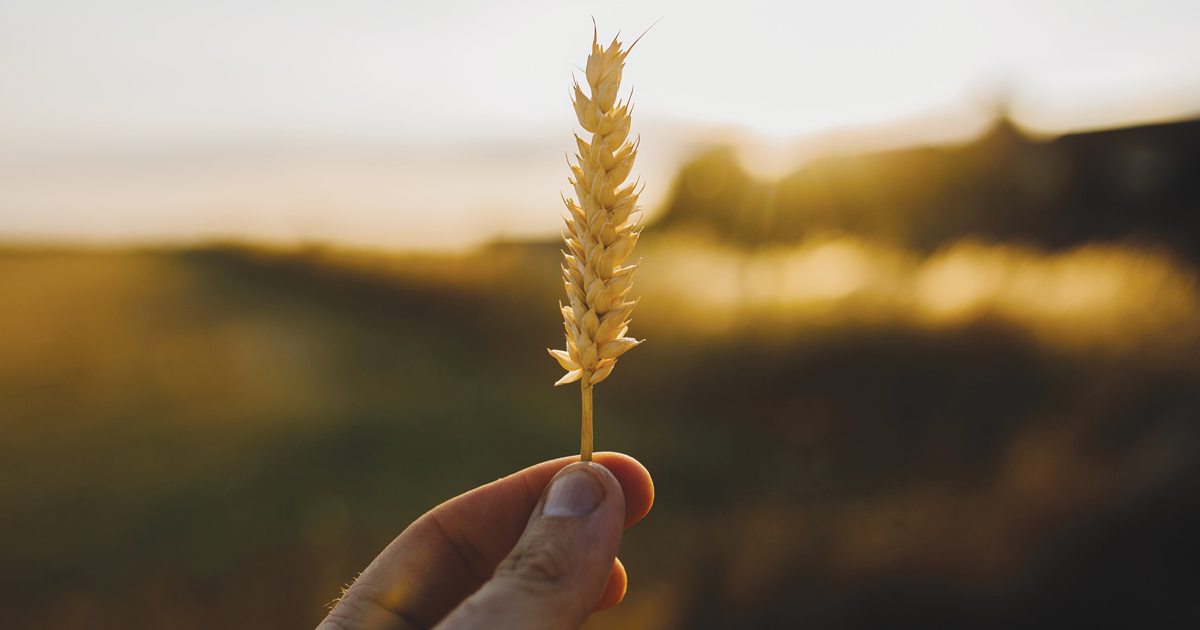12. Buried Seed
Lt. Colonel Dean Hinson continues the Bible Study series by exploring John 12:24.
As I complete these Bible Studies series on Gardening with God, I want to look at Jesus’ words recorded in John 12 referring to the death of the seed: “I tell you the truth, unless a kernel of wheat is planted in the soil and dies, it remains alone. But its death will produce many new kernels—a plentiful harvest of new lives” (John 12:24 NLT). At this time of year, we see the evidence of this truth as trees, bushes and plants that have appeared dead over the winter burst forth with glorious blooms and flowers testifying to life.
In John 12, Jesus is talking with some Greeks who have come to Jerusalem for the Passover celebration and asked to meet Jesus. In John’s Gospel, this takes place just after Jesus’ triumphal entry into Jerusalem that marks the beginning of the week, we call Holy Week, leading up to his crucifixion and resurrection. He illustrates His coming death and burial by a seed that is planted in the ground. Just as this buried seed will provide a “plentiful harvest,” Jesus’ death and resurrection on Easter will also result in a bountiful harvest of souls for the Kingdom of God.
In “Reforesting Faith” by Matthew Sleeth, he tells of archaeologists excavating the fortress Masada in the Judean wilderness finding a jar of date seeds tested to be 2,000 years old. Forty years after they were discovered, someone said, “Why don’t we see if these things will sprout?” They treated the seeds with germination hormones and one 2,000-year-old seed sprouted. The tree that resulted now stands over ten feet tall and is producing pollen. They call the 69+. It was used to pollinate a female date palm and fruit has been produced from this ancient seed. What appeared dead has come to life and produced fruit!
This reminds me of the scene in Ezekiel when the prophet is taken to a valley filled with completely dried out bones. God used this valley of bones to teach the children of Israel, who were exiled in Babylon, not to lose hope even when things appear hopeless. As the world has suffered through this pandemic, causing panic, uncertainty, change and fear, we can have hope that the God who caused these completely dried out bones to live again is the God who has promised to never leave us or forsake us. Ezekiel said, “So I spoke the message as He commanded me, and breath came into their bodies. They all came to life and stood up on their feet—a great Army!” (Ezekiel 37:10). Therefore, we can have hope even in the darkest days that God can take care of any situation, no matter how hopeless it may appear.
In reading Matthew Sleeth’s book, he mentioned a passage in Job that I don’t remember reading. He said that at one point Job wished that he was a tree.
“Even a tree has more hope! If it is cut down, it will sprout again and grow new branches. Though its roots have grown old in the earth and its stump decays, at the scent of water it will bud and sprout again like a new seedling.”
Job 14:7-9 NLT
It is my prayer that over this last year as we have gardened with God, we have gained a new appreciation of how important trees, bushes, plants, seeds, roots and fruit are to God. We have seen how God uses common gardening ideas to open Scriptural truths. From the tree in the Garden of Eden in Genesis to the tree beside the river flowing from the throne in Revelation, trees fill Scripture. From the Garden Tomb and Jesus being mistaken for the gardener to the vine and branches of John 15 and the fruit of the Spirit in Galatians, we can see how important these visuals are in deepening our relationship with God.
Paul says in his prayer for the Ephesians (and this is my prayer for all of you), “I pray that from His glorious, unlimited resources He will empower you with inner strength through His Spirit. Then Christ will make His home in your hearts as you trust in Him. Your roots will grow down into God’s love and keep you strong” (Ephesians 3:16-17 NLT).







